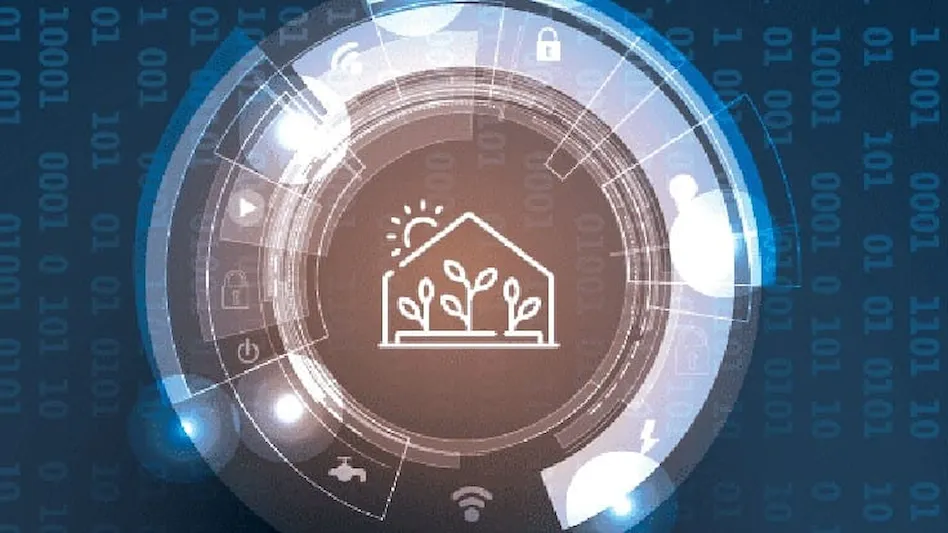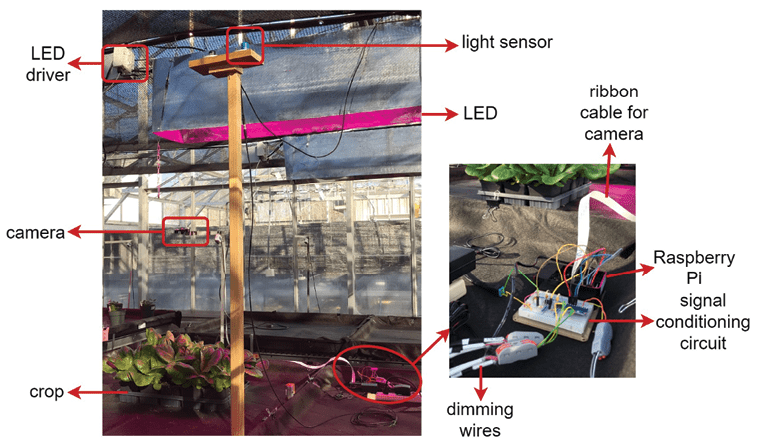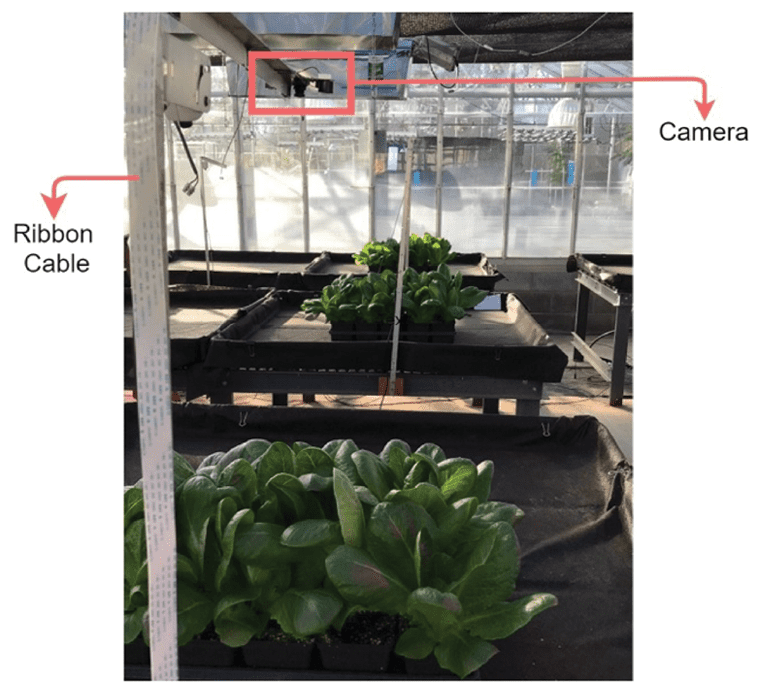

LED lighting systems have greatly improved over the past decade. This technology is now mature. The best LED lights have about twice the efficacy (light produced per unit energy) of the best HPS fixtures. The efficacy of LED lights has increased rapidly since they were first introduced, but this cannot continue. We are simply running into the limits of physics; although LED fixtures will continue to become more efficient, further improvements will be slower than in the past.
Although there is no doubt about the higher efficacy of LED fixtures, adoption of this technology is not a no-brainer, as they cost more than HPS fixtures. The question of whether the lower operating expenses (electricity) of LED fixtures justify the higher capital expense is difficult to answer. In many cases, the higher capital expense can be partially offset by rebates provided by utility companies. To help greenhouse growers get the best possible information before deciding which type of light fixtures to install, we developed several calculators to estimate both capital and operating expenses. Those tools are freely available on the Project LAMP website at bit.ly/light-calculators.
LED fixtures have another important, but unfortunately still overlooked, advantage over HPS fixtures: controllability. Too often, LED fixtures are treated as simple, energy-efficient replacements for HPS fixtures. However, most LED manufacturers now equip their fixtures with dimmable drivers (the power supply for the fixtures). This allows for precise and real-time control over the light output from the fixtures. Although some HPS fixtures also have limited dimming capacity, their warm-up and cool-down times do not allow for the same level of control that can be achieved with LED fixtures. An added advantage of dimming LED fixtures is that it makes the lights slightly more efficient, while at the same time extending their expected lifespan.
Different manufacturers use different protocols to communicate between a lighting control system and the fixtures, including wi-fi, Bluetooth and a 0 (or 1) to 10 VDC signal. If a lighting system uses a voltage signal for dimming control, additional wiring may be needed. This is easy to do at the same time the fixtures are installed, while it may be expensive to add that wiring later on. So even if you are not planning to use the dimming function right away, it may be wise to install the required wiring when the fixtures are installed, so it is easy to take advantage of that added functionality at a later time.

Different control approaches
Having a good lighting control strategy is important. In many cases, light is the most poorly controlled environmental variable in greenhouses, while at the same time, it is probably the most important factor driving crop growth. Inconsistent light conditions will make crop production inconsistent and potentially unpredictable. For planning purposes, good control over light is at least as important as temperature control.
Traditional lighting control approaches include timers, threshold control, DLI control and, in some cases, manual control. With manual control, it is nearly impossible to get consistent day-to-day light conditions in a greenhouse, since it is simply not practical to make changes many times a day. Timer control is the simplest way to control lights, but also doesn’t result in consistent day-to-day lighting conditions, since it does not account for how much sunlight is available. The simplest way to account for sunlight is threshold control, where the lights are turned on whenever sunlight levels drop below a user-set threshold. This approach has long been used with HPS fixtures and can work even better with LED fixtures, since there is no need to worry about the fixtures cooling down or warming up. But threshold control does not necessarily result in consistent lighting conditions. The lights will typically still come on in the morning and evening hours, even if the day is very sunny.
Daily light integral (DLI) control aims to provide the same amount of light to the crop every day, regardless of weather conditions. A light sensor is used to track the amount of light received over the course of the day and lighting control decisions are based on how much light has already been received on that specific day. Different companies have their own unique, and typically proprietary, approaches to DLI control. But generally speaking, DLI control can provide more consistent lighting conditions, and thus more predictable crop production, than other lighting control approaches.

Advances in lighting control
As part of Project LAMP, scientists at the University of Georgia have been working on better, more cost-effective lighting control approaches. A relatively simple method is ‘DLI carry-over.’ If you get more than the required DLI on a sunny day, it is possible to lower the DLI target the following day, thus reducing the amount of light provided and electricity used. Our estimates are that this can result in savings anywhere from $6,000 to $9,000 per acre per year.
More advanced methods to control lighting systems can account for weather forecasts, physiological responses of the plants and/or variable electricity prices.
Weather forecasts can obviously be a valuable tool in making lighting decisions. If you know how much sunlight you will likely get on a specific day, you can easily estimate how much supplemental light will be needed and incorporate that information into the decision-making process. Those sunlight predictions can be based on locally measured sunlight intensity or potentially be obtained from an external provider. There is a well-established industry that provides sunlight forecasts to utility companies to predict how much solar energy can be generated. That same information can be used for greenhouse lighting control.
Alternatively, sunlight predictions can be based on historical data, combined with real-time measurements of light intensity. We used a large historical data set to ‘train’ our sunlight prediction algorithm, allowing us to make these predictions based on real-time measurements of sunlight levels in the greenhouse. Those predictions are continuously updated throughout the day. We combine that information with simple physiological models of how photosynthesis responds to different light levels. Plants use light more efficiently when light levels are low, and supplemental light should thus be provided when there is relatively little sunlight, if possible. A third factor that improves lighting control strategies is to account for the cost of electricity. Depending on the utility company, prices may fluctuate in real-time or based on preset schedules. Obviously, the most cost-effective lighting strategy takes advantage of periods with low electricity prices and avoids using supplemental light during periods with high prices.
We combined light forecasts, physiological models and the real-time price of energy to minimize the cost, rather than the amount, of supplemental lighting provided to a lettuce crop. We tested this lighting control method in a greenhouse during the winter and spring. Benefits of our approach were limited in the middle of winter, reducing electricity costs by just over 4%. Because of the very low sunlight levels, there simply is not much flexibility in how much supplemental light to provide or when to provide it. The average DLI from sunlight during this period was only about 2.5 mol/m2/day and most of the light required for adequate growth had to be provided by the LED fixtures. In the spring, the average DLI was close to 8 mol/m2/day, which allowed for much more flexibility in when and how much supplemental light to provide. This resulted in a reduction of electricity costs of 33%, without a negative effect on crop growth or quality. It is typical that advanced lighting control approaches have the greatest benefits during the shoulder seasons in the fall and spring, when the sun provides a substantial amount of light. Given the high cost of supplemental lighting, a 33% decrease in electricity costs can obviously result in substantial savings.

A 'peak' into the future
Utility companies follow the controlled environment agriculture industry with great interest. It can, of course, provide a large new market for their electricity. But it also provides new challenges. The electrical grid has to be designed for the periods with the highest electricity use. Upgrading the grid to facilitate increased electricity use is expensive and utility companies prefer to smooth out the overall demand for electricity over the entire day. They typically do so by charging variable electricity prices, also called demand response; when there is more demand, the response is to increase prices. The goal is to decrease electricity use during periods of high demand. This is critical to prevent power interruptions, as we have seen in recent years in California and Texas. This issue is so important to utility companies that some of them offer contracts to large electricity users that allow the utility company to reduce the amount of electricity provided when needed.
In areas with high concentrations of greenhouses, like Michigan and Ontario, the greenhouse industry may play an important role in these demand response schemes. The timing of electricity use for supplemental lighting is much more flexible than electricity uses in most other industries. Thus, greenhouses in principle can act as a buffer for the electrical grid, reducing use when demand is high and increasing use when demand is low. If done carefully, it should be possible to do so without negative impacts on crop growth. This will require better integration of the electrical grid and greenhouses. It will be especially important for smart lighting control systems to have real-time access to electricity prices, and preferably, forecasted prices for the rest of the day and even following days. This can create a win-win scenario for greenhouses and utility companies, allowing greenhouses to minimize their electricity cost, while allowing utility companies to better manage the overall demand for electricity. We’re not there yet. But given the mutual benefits that can be realized, I am hopeful that we will see this in the not-too-distant future.

Explore the April 2022 Issue
Check out more from this issue and find your next story to read.
Latest from Greenhouse Management
- Chilli thrips (Scirtothrips dorsalis)
- GS1 US Celebrates 50-Year Barcode 'Scanniversary' and Heralds Next-Generation Barcode to Support Modern Commerce
- University of Florida offers Greenhouse Training Online program on irrigation water
- Flower trends in full bloom
- ‘Part of our story’
- Dramm introduces new hose, sprinkler attachments for home gardeners, nurseries
- Nominate an outstanding leader
- Profile Products hires sales and business development manager for Europe and Asia





